| << Chapter < Page | Chapter >> Page > |
In the previous example we were able to use simple trigonometry to calculate the resultant displacement. This was possible since thedirections of motion were perpendicular (north and east). Algebraic techniques, however, are not limited to cases where the vectors to be combined are along the same straight line or at right angles to oneanother. The following example illustrates this.
A man walks from point A to point B which is 12 km away on a bearing of . From point B the man walks a further 8 km east to point C. Calculate the resultant displacement.
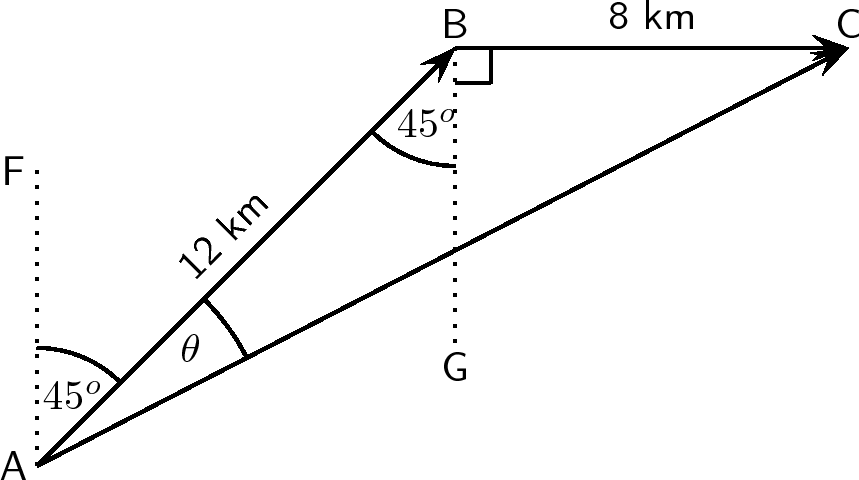
since the man walks initially on a bearing of . Then, (parallel lines, alternate angles). Both of these angles are included in the rough sketch.
The resultant is the vector AC. Since we know both the lengths of AB and BC and the included angle , we can use the cosine rule:
Next we use the sine rule to determine the angle :
To find , we add . Thus, .
The resultant displacement is therefore 18,5 km on a bearing of .
In the discussion of vector addition we saw that a number of vectors acting together can be combined to give a single vector (the resultant). Inmuch the same way a single vector can be broken down into a number of vectors which when added give that original vector. These vectors which sum to the original are called components of the original vector. The process of breaking a vector into its components is called resolving into components .
While summing a given set of vectors gives just one answer (the resultant), a single vector can be resolved into infinitely many setsof components. In the diagrams below the same black vector is resolved into different pairs of components. These components are shown as dashed lines. When added together the dashed vectors give the original black vector(i.e. the original vector is the resultant of its components).
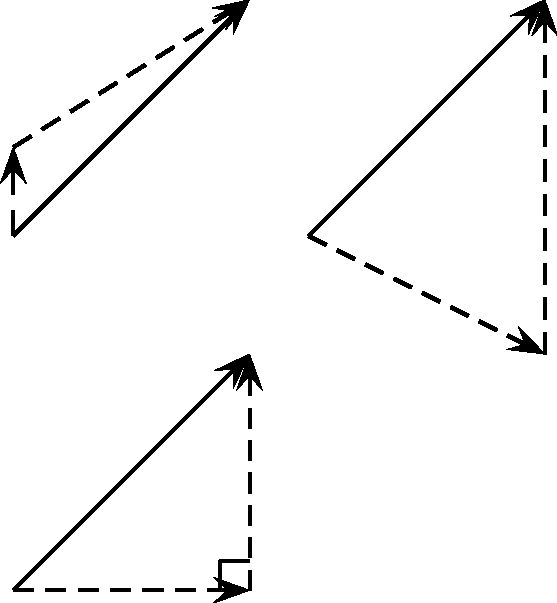
In practice it is most useful to resolve a vector into components which are at right angles to one another, usually horizontal and vertical.
Any vector can be resolved into a horizontal and a vertical component. If is a vector, then the horizontal component of is and the vertical component is .
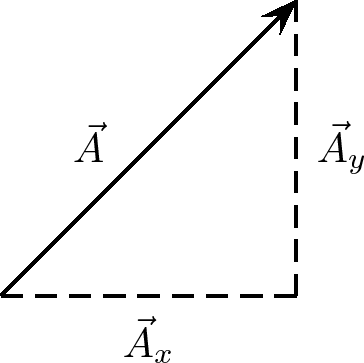
A motorist undergoes a displacement of 250 km in a direction north of east. Resolve this displacement into components in the directions north ( ) and east ( ).
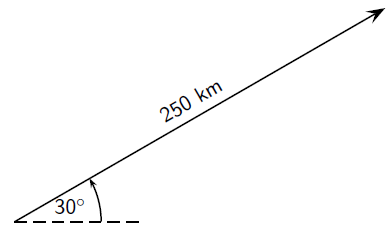
Next we resolve the displacement into its components north and east. Since these directions are perpendicular to one another, thecomponents form a right-angled triangle with the original displacement as its hypotenuse.
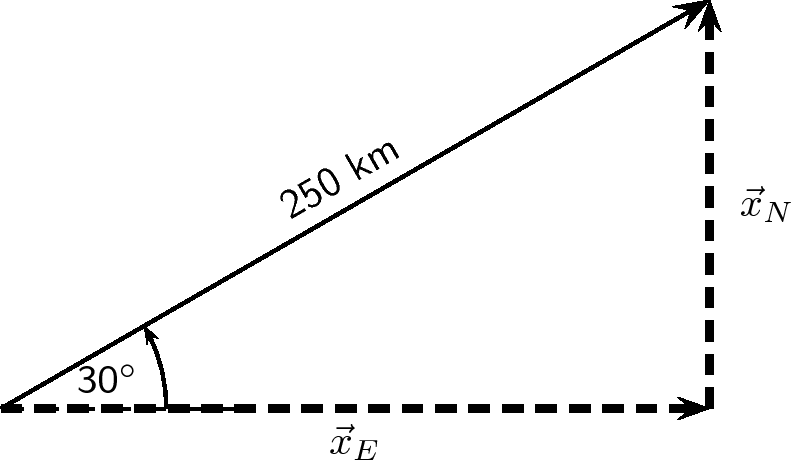
Notice how the two components acting together give the original vector as their resultant.
Now we can use trigonometry to calculate the magnitudes of the components of the original displacement:
and
Remember and are the magnitudes of the components – they are in the directions north and east respectively.

Notification Switch
Would you like to follow the 'Physics - grade 10 [caps 2011]' conversation and receive update notifications?